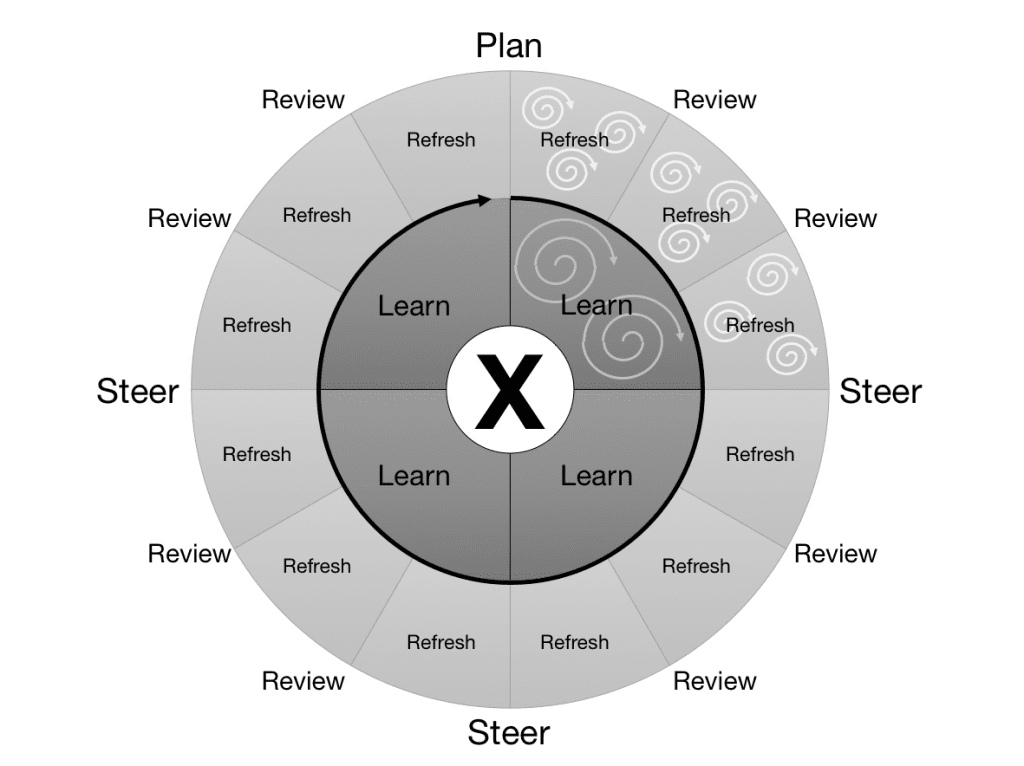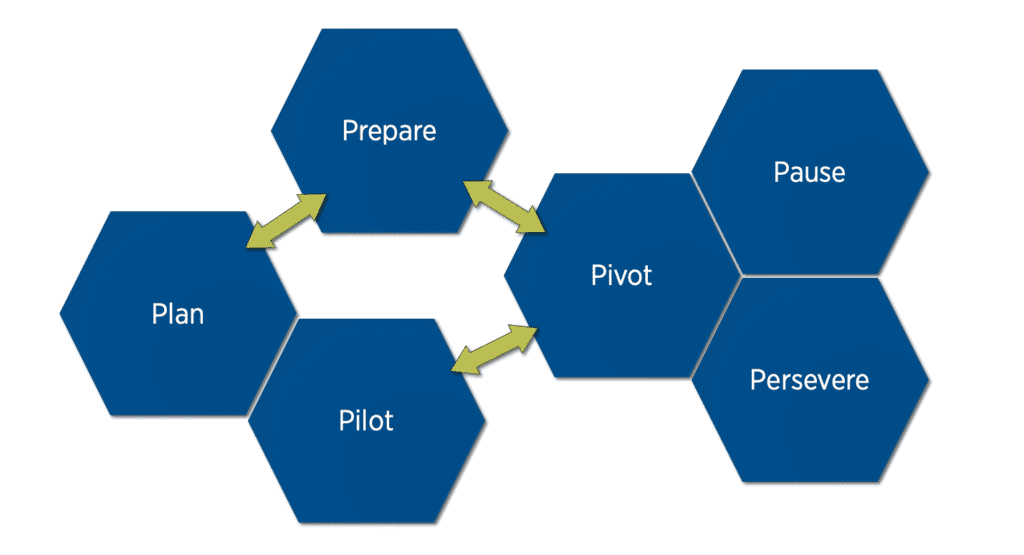I tend to think about Strategy Deployment in two parts. First is the structure of the Strategy itself, which is where the TASTE framework and the X-Matrix are relevant. Second is the Deployment itself, with the X-Matrix proving a focal point for this. However, there is always a risk that the deployment becomes a dictate, with the X-Matrix simply becoming a document with which to prescribe and define projects. In that case, there would be no ebb and flow.
Ebb and Flow
I’ve previously written Catchball, the dynamics of Strategy Deployment, and described a Strategy Deployment cadence. I would also add Backbriefing as a related idea. However, there is one aspect I’ve not articulated very well yet. That is what I am calling Ebb and Flow. The metaphor is the back and forth, coming and going, and constant fluctuation between different areas of the business as the strategy is developed and delivered. It makes Strategy Deployment a more emergent and fluid process than a deterministic and linear one.
Cadence
First, let’s recap the cadence I previously described, which included the following elements:
- Planning & Steering
- Learning
- Refreshing

Progression
Within this cadence there are six pieces, grouped into three phases. The progression of Strategy Deployment occurs through the ebb and flow between these pieces and phases.
- Prepare
- Plan and Pilot
- Pivot, Pause or Persevere

Prepare
This is what happens before the start of a Planning and Piloting (aka Steering) Cycle. It’s when we take stock of where we are now, what progress we have made, and where we want to go next. This might involve assessing the current competitive landscape, taking a pulse of the organisation and collating feedback from previous initiatives. It’s this Prepare phase that creates the transition from execution back into planning, and allows the strategy to be emergent based on previous experiences, learnings and discoveries.
Plan and Pilot
This is the start of the cadence cycle. It’s when we review all the information and data collected during Preparation and make decisions for new focus and directions. This would be when an X-Matrix is collaboratively populated and the Piloting would begin. Note that I’m using the word Pilot as an alternative to Steer, rather than suggesting the tactics are trials or tests. Thus Piloting is the process of deciding whether to Pivot, Pause or Persevere throughout the cycle.
Pivot, Pause or Persevere
As mentioned, these are the alternative approaches to take when Piloting. When executing the strategy and delivering the tactics, the feedback and learning may lead to one of these decisions. Pivoting involves a change of direction from the original plan while maintaining investment. Pausing means stopping the work completely, possibly in favour of investing in something completely different. Persevering means keeping going with the original intent. A significant amount of Pivoting or Pausing may lead to revisiting the Planning and all the learning will feed into the next Preparation.
This Ebb and Flow matches the experiences I have previously described of how Rally did Strategy Deployment and how Rally did Annual and Quarterly Planning. While there was an annual cycle, it was not a simple, sequential process that was rolled out across the business. Instead it was a fluctuating, participative and collaborative endeavour, punctuated by shifts between situational assessment, setting direction, and moving forward.

